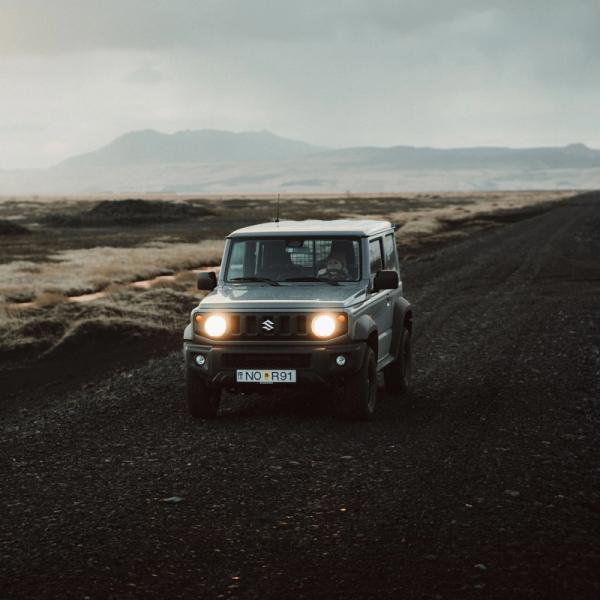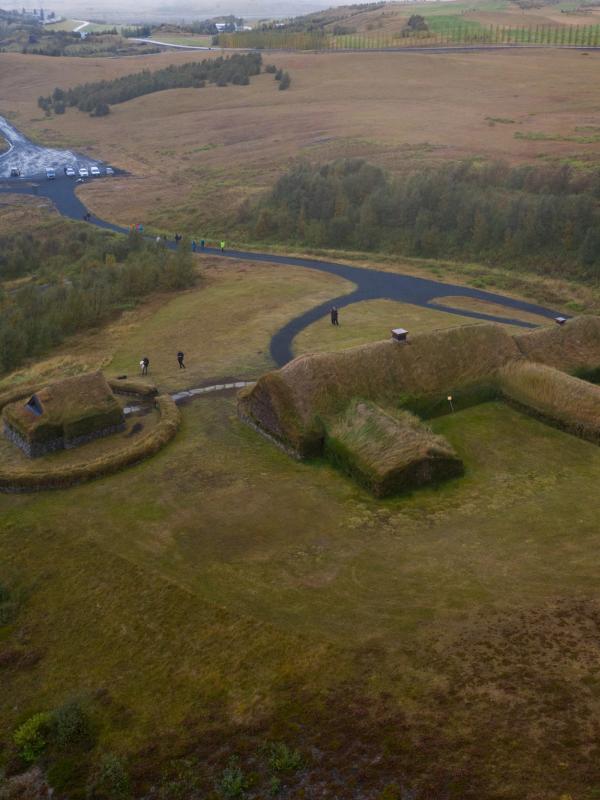
Stöng, Iceland: Step Into a Viking Time Capsule
The Stöng farmstead in Iceland's Þjórsárdalur Valley gives us a rare glimpse into Viking life frozen in time. Buried under ash from a massive volcanic eruption in 1104, this well-preserved settlement shows how Vikings actually lived over a thousand years ago.
If you're interested in Viking history or looking for something different beyond Iceland's typical spots, Stöng is definitely worth adding to your trip. You can explore the original archaeological site and visit a carefully recreated Viking farm nearby, all while enjoying some of Iceland's most beautiful natural scenery.
Key takeaways
- Stöng is one of Iceland's best-preserved Viking-era sites, buried by a volcanic eruption in 1104
- A newly discovered second house (found in 2023) suggests the settlement was larger than first thought
- The Þjóðveldisbærinn Stöng reconstruction lets you experience Viking life firsthand
- Combine your visit with natural spots nearby, like Gjáin ravine and waterfalls
- Best visited from May to October when the reconstruction is open and the weather is milder
What is Stöng and Why Is It Important?
Stöng is a Viking farmstead in Iceland’s Þjórsárdalur Valley that stands as a window into medieval Iceland. Unlike most Viking settlements that changed over centuries, Stöng was suddenly abandoned when the nearby Hekla volcano erupted in 1104, burying the farm under ash.
This event created something like an "Icelandic Pompeii" for archaeologists. The ash layer preserved the ruins in great detail, providing one of the most complete pictures of Viking-era buildings and daily life in Iceland.
Stöng was built during the Commonwealth Era (930-1262 AD), a key period when Iceland had a unique system of governance without a king. This was the time of the Icelandic sagas, and Stöng may have connections to saga figures like Gaukur Trandilsson, a warrior mentioned in the Njáls Saga.
What makes Stöng interesting is how it shows Vikings adapting to Iceland's harsh conditions. The farm shows how settlers combined traditional Scandinavian building methods with local materials, creating structures that could handle Iceland's tough climate.
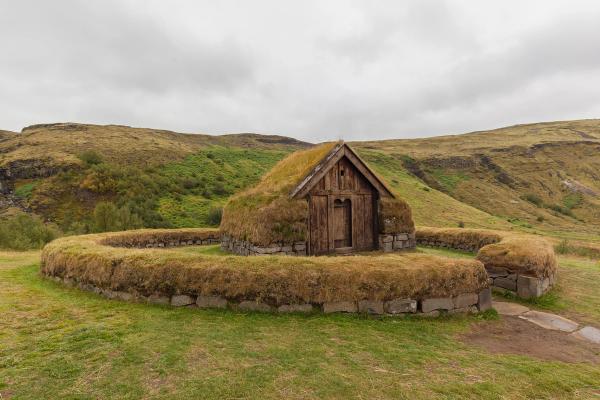
Archaeological Discoveries At Stöng
The story of modern Stöng begins in 1939, when archaeologists led by Danish archaeologist Aage Roussell found the remains of a longhouse, a smithy, and a cowshed beneath layers of volcanic ash. This dig was groundbreaking for Icelandic archaeology, revealing a farmstead frozen at the moment it was abandoned.
The main structure they found was a longhouse about 17 meters long and 6 meters wide. Researchers noticed the extensive use of wood in the construction, something rare in a country where timber is scarce. This suggests Stöng's inhabitants were wealthy, as wood was a luxury that had to be imported or collected as driftwood.
The walls combined turf (cut pieces of soil with grass roots) with wooden framing, creating thick, insulating barriers against Iceland's harsh weather. Inside, a central hearth provided warmth and cooking space, with sleeping areas along the sides.
Further digs in 1992-1993 expanded the site's story by uncovering a church and cemetery. These findings showed that Christianity had reached Stöng, matching Iceland's official conversion around 1000 AD. The presence of a church also suggests Stöng was an important local center, not just an isolated farm.
Recent Developments
In 2023, archaeologists discovered a second house at Stöng while preparing to repair the protective shelter over the ruins. This finding suggests the settlement was larger than previously thought, possibly indicating a more substantial community or a higher-status farmstead. Researchers are now using ground-penetrating radar to map the site further without disturbing the fragile remains.
This discovery joins other recent findings across Iceland that are reshaping our understanding of Viking settlement. For instance, evidence from Reykjavík suggests people may have arrived before the traditionally accepted date of 874 AD, potentially changing how we view sites like Stöng in the broader settlement timeline.
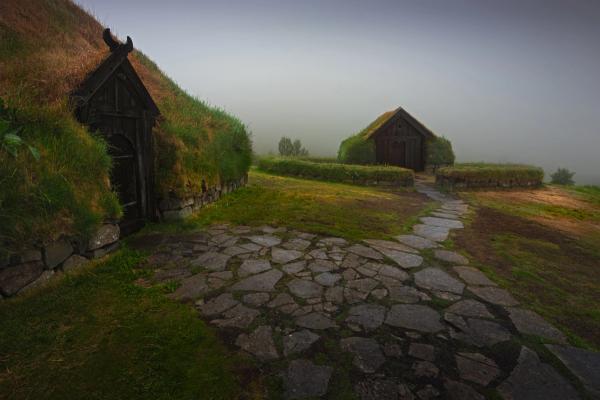
Visiting the Original Stöng Archaeological Site
The original Stöng ruins sit in the Þjórsárdalur Valley, about 130 kilometers east of Reykjavík. The site is accessible by car via Road 32, which is paved and doesn't require a 4x4 vehicle under normal conditions.
From Reykjavík, the drive takes about 2 hours. Head east on the Ring Road (Route 1), then turn onto Route 30 toward Flúðir, and finally onto Road 32 toward Þjórsárdalur. Signs will direct you to Stöng from there. If you're coming from Golden Circle attractions like Geysir or Gullfoss, the site is just a 45-60 minute drive away, making it a good addition to that popular route.
The ruins are open to visitors year-round, but the best time to visit is between May and October when weather conditions are milder and days are longer. In winter, access can be limited by snow, and the short daylight hours might reduce your exploring time.
When you arrive, you'll find a small parking area and basic facilities. The ruins themselves are sheltered by a protective structure that helps preserve them from Iceland's harsh elements. Inside, you can see the foundations of the longhouse and other buildings, with signs explaining what you're looking at.
A few practical tips for your visit:
- Wear sturdy, waterproof shoes as the ground can be uneven and often wet
- Bring layers – Iceland's weather changes quickly
- Pack a small snack and water, as there are no food services at the site itself
- Allow 30-60 minutes to explore the ruins thoroughly
- Consider downloading an offline map, as cell service can be spotty in the area
There's no entrance fee for the original ruins, making this an affordable stop.
Þjóðveldisbærinn Stöng: Experience Viking Life
While the original ruins show you Viking foundations, the Þjóðveldisbærinn Stöng reconstruction lets you step fully into Viking life. Located about 7 kilometers south of the original site, this recreation was built in 1974 to mark Iceland's 1100th anniversary of settlement.
The reconstruction is based directly on the archaeological findings and shows what Stöng would have looked like before the eruption. The main longhouse features a central hearth, wooden benches, and woven textiles. The walls are built using traditional methods, layers of turf and stone with wooden supports, just as Vikings would have constructed them.
What makes Þjóðveldisbærinn Stöng special is the hands-on experience it offers. Unlike many museums where you just look at exhibits, here you can try on medieval clothing, weave on looms, and sit on the benches where Vikings once debated. It's an immersive way to connect with Iceland's past that works well for both adults and children.
The reconstruction is open from May 1 to October 15, from 10:00 AM to 5:30 PM daily. Admission costs 2,500 ISK for adults (about $18 USD), 500 ISK for children aged 6-12, and is free for kids under 6. This fee helps maintain the site and supports ongoing research.
To make the most of your visit:
- Join a guided tour if available – the staff's knowledge brings the settlement to life
- Ask about seasonal demonstrations of Viking crafts like weaving or cooking
- Try on the replica clothing for a photo opportunity
- Take time to notice small details like the smoke hole in the roof and the sleeping arrangements
- Visit early in the day to avoid potential tour groups
The reconstruction sits in a beautiful spot with views of the surrounding landscape, helping you understand why Vikings chose this fertile valley for settlement.
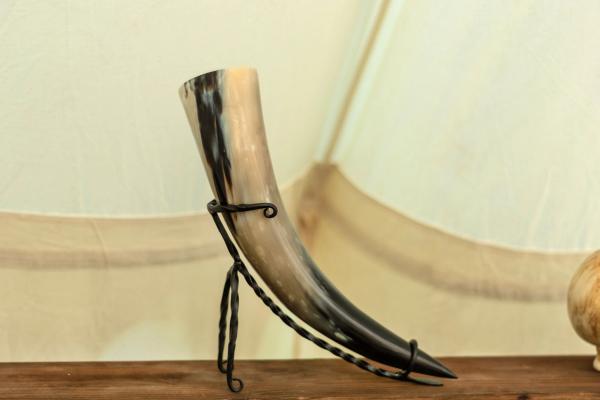
5 Must-Visit Places Near Stöng
Stöng’s location allows you to combine a visit to the farmstead with visits to some of the coolest natural attractions in the region.
Gjáin Ravine
Just a 5-10 minute drive from Stöng, Gjáin is a pretty hidden spot. This green ravine stands out from the rocky landscape around it, with small waterfalls, clear streams, and plants growing between rock formations.
If you watch Game of Thrones, you might recognize Gjáin from Season 4. Getting there is easy; it's a short walk from where you park your car, and it's free to visit. The path can get slippery when it's wet, so wear good shoes.
Gjáin is special because it shows how nature thrives in a place shaped by volcanoes (the same volcanoes that buried Stöng). The greenery helps you picture how the valley looked to the Vikings before trees were cut down across Iceland.
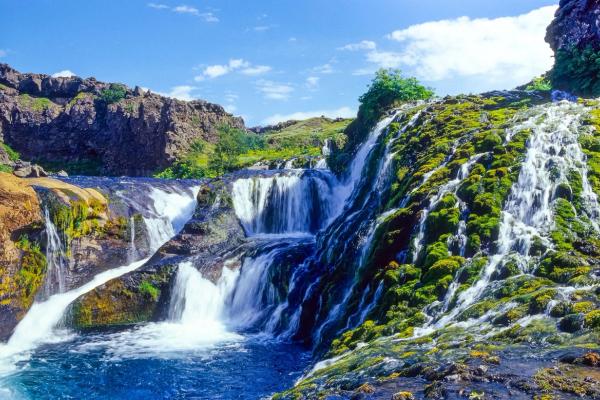
Háifoss Waterfall
About 15-20 minutes from Stöng, Háifoss is quite different from the historical sites. It's Iceland's sixth-highest waterfall, dropping 122 meters into a deep canyon.
The road there isn't paved and can be tough to drive, especially when wet, so renting a 4x4 car is a good idea. After parking, a short walk takes you to spots where you can see both Háifoss and another waterfall nearby called Granni.
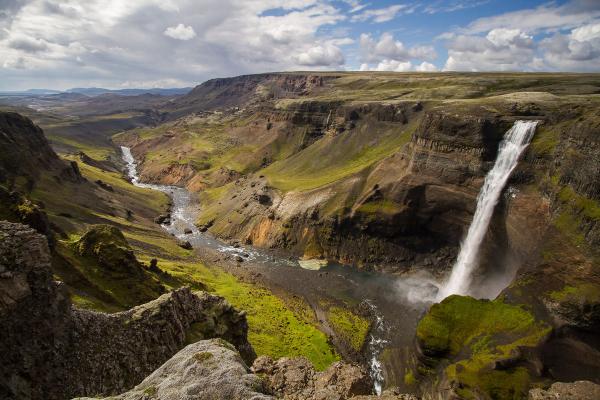
Hjálparfoss Waterfall
Just 5 minutes from Stöng, Hjálparfoss (which means "Helping Falls") is where two rivers join together between odd-shaped rock columns. In the past, travelers crossing Iceland would stop here to give their horses water after long trips.
You can easily reach the falls with a short walk from the parking area, and it's free to visit. The area around it has interesting lava shapes, and in summer, you'll see black rock, white water, and green moss.
Hjálparfoss is a good, quick stop between Stöng and other places. You don't need to hike far, but you still get to see something really nice.
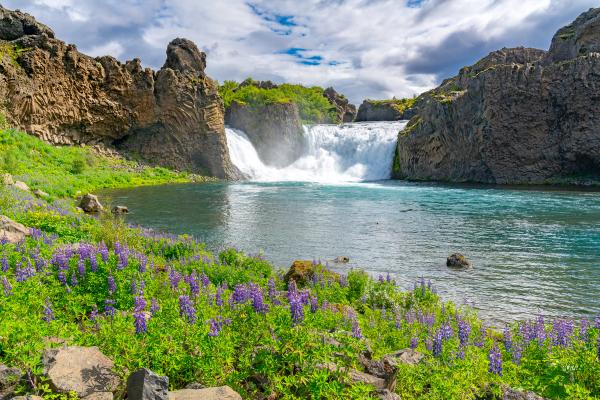
Hrunalaug Hot Spring
About 25-30 minutes from Stöng near the village of Flúðir, Hrunalaug is a real Icelandic hot spring. It's a small pool with stone walls and warm water (38-40°C), perfect for a relaxing soak.
Unlike the bigger hot springs in Iceland, Hrunalaug feels more basic and natural. It's on private land, and you can leave a small donation to help keep it running. The pool fits about 10 people, so going in the morning or evening helps you avoid crowds.
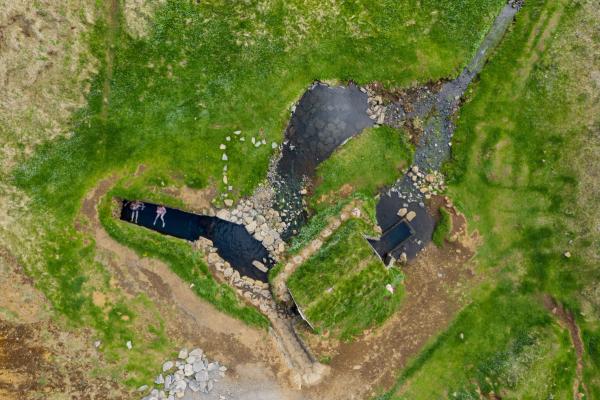
Secret Lagoon (Gamla Laugin)
In Flúðir, about 30 minutes from Stöng, the Secret Lagoon is a bit more developed but still feels like a real Icelandic bath. It opened in 1891, making it one of Iceland's oldest swimming pools, and gets its water from natural hot springs.
The water stays at 38-40°C all year. Around the pool, you'll see small geysers and steam coming from the ground. It costs about 4,200 ISK (34 USD) for adults to get in, and you can rent towels and swimsuits if you need them.
The Secret Lagoon offers amenities that Hrunalaug lacks, including changing rooms, showers, and a small dining area.
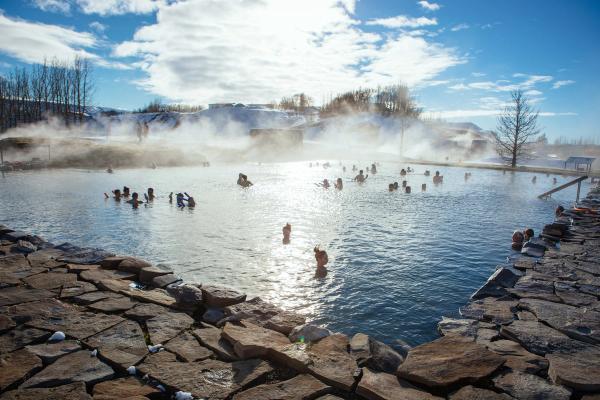
Conclusion
Stöng offers something increasingly rare: a direct, tangible connection to people who lived a thousand years ago. Walking through the ruins or the reconstruction, you're treading the same ground as Viking farmers who faced volcanic eruptions, harsh winters, and the challenges of building a new society on a remote island.

